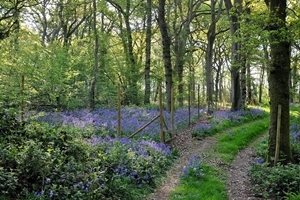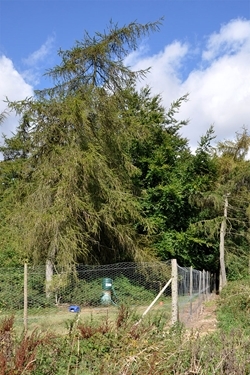 Travelling across the country, I witness a variety of pheasant release pens in all shapes and sizes; from temporary top-netted pens releasing a hundred or so pheasant poults to larger, open-topped pens. Release pens should provide a safe environment with the appropriate habitat, feeding regime and clean water for the successful acclimatisation, growth and survival of pheasant poults. GWCT research has shown that the release environment will have a significant impact on the return rate of birds. Therefore, attention to detail is paramount to get the birds off to the best possible start.
Travelling across the country, I witness a variety of pheasant release pens in all shapes and sizes; from temporary top-netted pens releasing a hundred or so pheasant poults to larger, open-topped pens. Release pens should provide a safe environment with the appropriate habitat, feeding regime and clean water for the successful acclimatisation, growth and survival of pheasant poults. GWCT research has shown that the release environment will have a significant impact on the return rate of birds. Therefore, attention to detail is paramount to get the birds off to the best possible start.
Ideally a pen should offer poults:
- ⅓ open ground
- ⅓ low ground cover
- ⅓ roosting of varying heights
Open ground accessible by direct sunlight provides a place for poults to sun-bask as well as space for feeders and drinkers. Low ground cover (shrubs such as bramble, holly, native privet, dogwood, thorns, rose, spindle, etc) provides refuge for poults to escape extreme weather, aerial predators, and bullying cohorts. Encouraging poults to learn to roost is also important, and low shrubs graduating in height from species such as goat willow, elder, hazel and hawthorn up to field maple, crab apple and cherry, provide the necessary perching places. A mixed mosaic of the different cover types throughout the pen will help ensure an even distribution of birds (reducing disease transmission) and that each bird has the three cover types near at hand. The above-mentioned structural diversity should also extend around the outside of the pen, especially to provide safety once out.
The GWCT recommends a release pen stocking density of one bird/10m² of pen, which equates to 1,000 birds/hectare of pen for plantation woodlands. However, for ancient semi-natural woodland this should be reduced to 700 birds/ha of pen, which is one bird/14.2m². This density serves the purpose of reducing nutrient enrichment, which causes an increase in aggressive weed species, such as nettle and dock, which out-compete sensitive woodland plants. It also reduces disease issues, so it’s beneficial in many ways. Taking care to preserve sensitive habitats is important for the future of game shooting and ensuring we endeavour to maintain an overall positive effect on the environment.
 Our recommendation is to keep release pen fences inside woodlands, wherever possible, to reduce the visual impact on the landscape and to make it harder for raptors to predate young poults. For pens that are already established in the open, or when pen extension on to open ground is necessary to comply with releasing guidelines, we recommend planting shrubby species and small trees around the outside and within the open areas of the pen. Within the woodland, sky-lighting provides adequate light if done sufficiently. Concealing pens may also reduce the risk of public interference.
Our recommendation is to keep release pen fences inside woodlands, wherever possible, to reduce the visual impact on the landscape and to make it harder for raptors to predate young poults. For pens that are already established in the open, or when pen extension on to open ground is necessary to comply with releasing guidelines, we recommend planting shrubby species and small trees around the outside and within the open areas of the pen. Within the woodland, sky-lighting provides adequate light if done sufficiently. Concealing pens may also reduce the risk of public interference.
To provide sufficient scope for benefits, pheasant release pens should not take up more than about one-third of the total woodland area on a shoot holding. This should include any woodland whether or not it has existing nature conservation interest.
The following figures may be of interest and were collated through GWCT research and extensive and detailed study of radio-tagged pheasants. This work demonstrated that typically, the fate of released pheasants is as follows:
- 3% die early in the release pen
- 38% shot
- 23% predated or scavenged before shooting commences
- 13% predated or scavenged after shooting commences
- 7% other death (road kills/disease etc)
- 16% survive to 2 February
Of the birds that are predated, foxes are the most significant predator but open pens with poor habitat stresses poults, which results in more disease and greater predation from raptors due to the lack of escape cover. These results highlight the extent of losses which can be expected even before shooting commences.
During this coming release period, focus on assessing your pheasant release pen habitat, identify the key roosting areas of the pens, where the morning and evening sun enters the pen, the areas birds congregate and why they are there at certain periods of the day. This knowledge can then be utilised come February to carry out thinning work, improve the overall habitat matrix and ultimately improve husbandry.